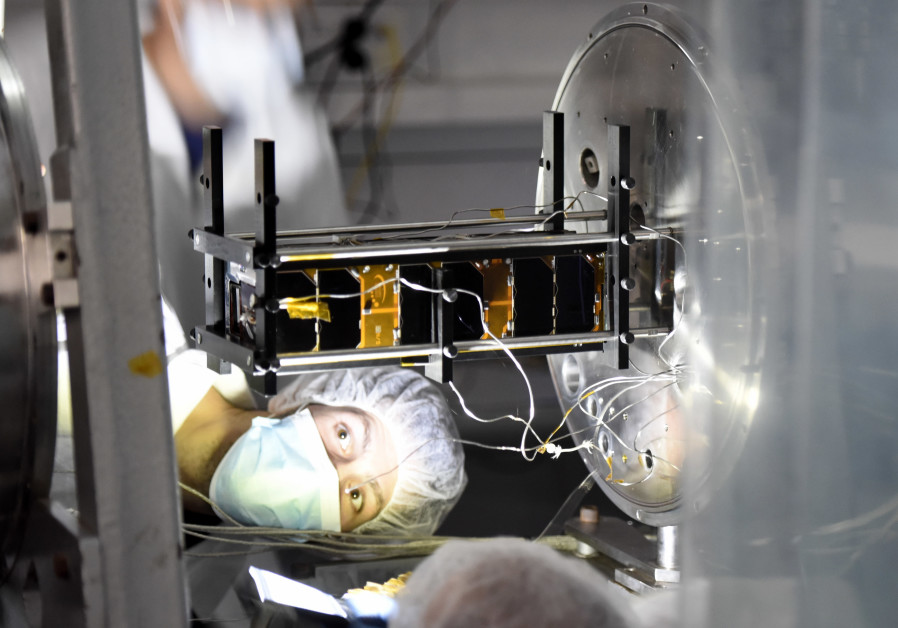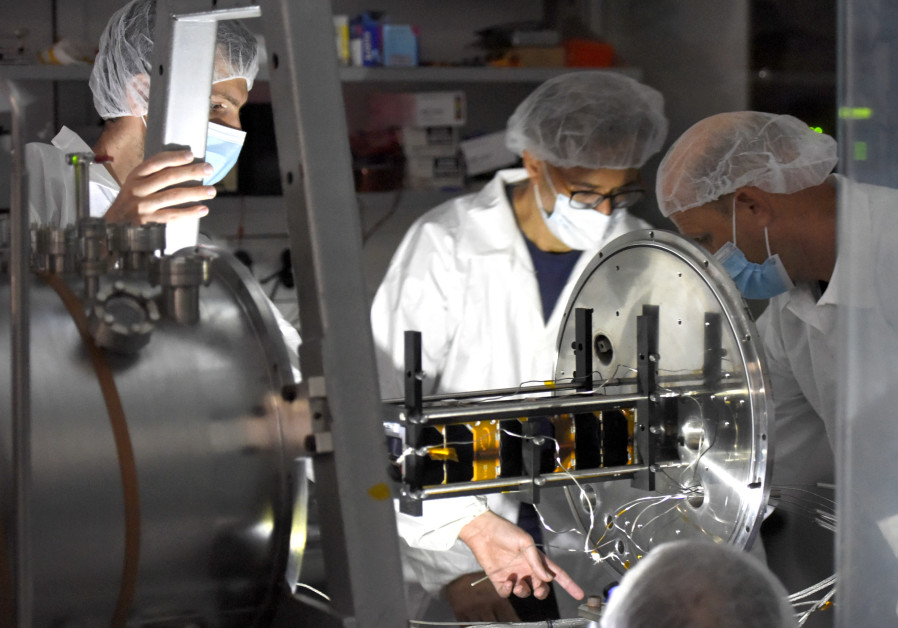TAU-SAT1 took off directly from the NASA launch facility in Virginia at 19:36 Israel time.
“We have now joined the ‘Civil Space Revolution’, called New Space, in which not only giant companies with big budgets and large teams of engineers can build and launch satellites, unlike the Old Space, ” says Prof. Colin Price, head of the Porter Department of Environmental Studies at the TAU. “We were able to prove that with the right planning, miniaturization and modulation of many technologies, small satellites can be built by students within two years and launched into space, at a fraction of the budget needed in the Old Space. “
TAU-SAT1 was completed about four months ago. It was then sent to Japan for pre-flight testing at the JAXA space agency. It arrived in Virginia two weeks ago. The nanosatellite, which is only 10 by 10 by 30 cm. and weighs less than 2.5 kg., the space entered a NASA spacecraft destined for the International Space Station.
The nanosatellite is expected to orbit at an altitude of 400 kilometers above sea level, which the university described as a ‘dizzying speed’ of 27,600 km / h, or 7.6 km. per second. Every 90 minutes it completes an orbit around the earth.
 TAU-SAT1 (credit: Tel Aviv University)
TAU-SAT1 (credit: Tel Aviv University)cnxps.cmd.push (function () {cnxps ({playerId: ’36af7c51-0caf-4741-9824-2c941fc6c17b’}). deliver (‘4c4d856e0e6f4e3d808bbc1715e132f6’);});
if (window.location.pathname.indexOf (“656089”)! = -1) {console.log (“hedva connatix”); document.getElementsByClassName (“divConnatix”)[0].style.display = “none”;}
TAU-SAT1 is intended to perform several experiments while in orbit, including the measurement of cosmic radiation around the earth.
“Our scientific task is to monitor this radiation and measure the flux of these particles and their products,” said Dr. Meir Ariel, director of the TAU’s center for nanosatellites, explains. ‘It must be understood that space is a hostile environment, not only for humans but also for electronic systems. If these particles hit astronauts or electronic equipment in space, it can cause significant damage. The scientific information collected by our satellite will enable the design of protective equipment for astronauts and space systems. ”
To collect the data, the school built a satellite station on the roof of its engineering building. When TAU-SAT1 moves over Israel within a radius of 1000 km. from the receiving range of the station, the antennas will follow the satellite orbit and a process of data transmission between the satellite and the station will take place.
According to dr. Ofer Amrani, head of Tel Aviv University’s Mini-Satellite Laboratory, says these “broadcasts” take place about four times a day for less than ten minutes at a time.
“Because it has no engine, the nanosatellite’s orbit will fade over time due to atmospheric resistance – and eventually it will burn up in the atmosphere and return to us as stellar dust,” Amrani said.
 Tel Aviv University researchers (credit: University of Tel Aviv)
Tel Aviv University researchers (credit: University of Tel Aviv)He added that “we have built the infrastructure for the development of TAU-SAT1 on our own – from the clean rooms, through the various testing facilities such as the thermal vacuum room, to the reception and transmission station that we have placed on the roof.”
TAU said its researchers are already aiming to design another nanosatellite: TAU-SAT2.
“The idea is that any researcher and any student, from any school at the University of Tel Aviv or beyond, will be able to plan and launch experiments in space in the future – even without having an expert in the field. of space, “Amrani further explained.
